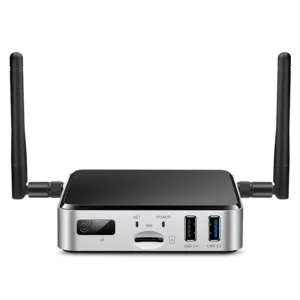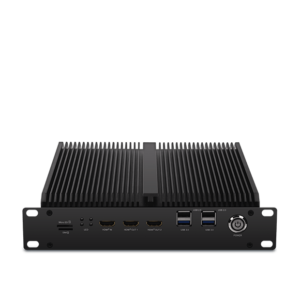AI on Side Products vs. Cloud AI: Advantages and Cons
AI on Side Products vs. Cloud AI: Advantages and Cons
Blog Article
Unlocking the Energy of AI on Edge Devices
Real-World Programs of AI on Side Products
Artificial intelligence (AI) is no further limited to the region of big, centralized data centers. Thanks to developments in engineering, side products today enjoy a key role in deploying AI right where data is generated. But what does AI on side devices suggest, and exactly why is it producing this kind of thrill? Here, we'll discover how ai on edge devices runs in the real world through side products and discover their wide variety of useful applications.

What is AI on Side Devices?
AI on side devices identifies deploying artificial intelligence methods directly on products like smartphones, cameras, drones, or IoT sensors. These units do not require usage of centralized machines for control information; instead, they conduct analysis and decisions domestically, creating the procedure faster, better, and usually more secure.
The "edge" here just refers to computing performed close to or at the foundation of knowledge technology, rather than depending on the cloud. This change is pushed by the requirements for real-time information control and the requirement to reduce latency, increase solitude, and minimize bandwidth usage.
Key Real-World Purposes of Edge AI
1. Intelligent Detective
AI-powered cameras built with skin acceptance, activity detection, and anomaly recognition are transforming security systems. Edge products in this domain may analyze movie streams in real-time to recognize suspicious actions, remove fake alerts, and enhance public safety. For example, AI formulas may find unusual actions and alert authorities instantly without the necessity to send video data to a main host for analysis.
2. Healthcare Monitoring
Wearable units and lightweight medical gear are leveraging ai m.2 module for managing wellness knowledge more efficiently. Edge-based AI in units like health trackers and smartwatches displays users' vitals, such as heartbeat, oxygen levels, or body pressure, in real-time. These techniques analyze data domestically and provide immediate feedback, paving the way for faster intervention all through emergencies.
Beyond wearables, advanced medical imaging units designed with on-device AI can detect signs of disorders like cancer, enabling earlier in the day diagnoses even in distant parts without web connectivity.
3. Autonomous Vehicles
Self-driving cars are among probably the most well-known samples of side AI in action. With receptors, cameras, and LiDAR methods serving as knowledge resources, AI computations get position onboard these vehicles to make split-second decisions. From sensing pedestrians and limitations to navigating town roads, side AI assures that the automobile works easily and efficiently. The real-time handling convenience of side units eliminates the reliance on high-latency cloud techniques, ensuring protection in life-critical scenarios.
4. Retail Analytics
Side devices in retail environments are helping organizations analyze consumer behavior. Clever racks and AI-equipped cameras may find client tastes, check inventory, and also customize in-store activities in true time. The data created from they assists merchants produce knowledgeable choices, increase client satisfaction, and improve inventory management.

5. Commercial IoT
Factories and industrial plants are adopting edge AI to revolutionize their checking and automation processes. AI-powered devices on machinery discover potential defects long before they result in expensive failures. Predictive preservation driven by edge AI reduces downtime, enhances output, and guarantees protection on the manufacturing floor.
6. Personalized Experiences in Client Units
Your smartphone is an excellent example of how side AI personalizes individual experiences. Functions such as for instance voice personnel, versatile camera controls, and on-device language interpretation use real-time AI to react to individual wants without giving sensitive data to additional servers. That fosters both convenience and privacy for the end user.
The Rising Influence of Side AI
The use of AI on edge units continues to spike, pushed by industries' increasing demand for low-latency, real-time research, and better data privacy. Its applications are reshaping industries which range from healthcare and automotive to public safety and retail. By adding AI's energy nearer to wherever data is made, edge products are not only improving efficiency but additionally demonstrating the unlimited potential of advancement in today's related world. Report this page